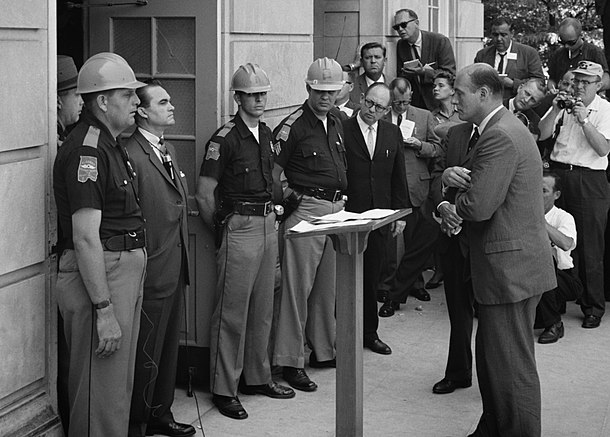It’s amazing that what colleges have worked so hard to assemble has been wiped away. The U.S. Supreme Court said today that using race as a factor in admissions is no longer legal.
My University Experience
My experience at four universities reflects the desire of the administration to help equalize educational opportunity by admitting a diverse student body. President Joe Biden backed that today by noting that despite progress, things still aren’t equal.
My first experience was at the University of Alabama. You may remember that school. George Wallace made it famous when, while governor, he stood in the schoolhouse door to block the admission of two Black students. Today, 8,542 of the university’s 38,645 students are Black and 2,138 are Hispanic. The school says this is a record enrollment for ethnic and racial minorities.
At the University of Texas-Austin, many steps were taken in the past to ensure solid enrollment of Hispanic and Black students. This admissions policy was challenged many years ago. This caused institution of the Top 10 Percent Rule, meaning that any student graduating in the Top 10 Percent of his or her graduating class would automatically be admitted. This certainly didn’t guarantee that those Top 10 Percent students could meet the rigors of academic life at UT, however. And that was a significant flaw. But today nearly 40 percent of the study body is minority.
At Texas State University, where I worked part time in Admissions after retirement, the college wanted to especially seek out Hispanic students. And it seems to have succeeded. It is flagged as a Hispanic-Serving Institution, and nearly 40 percent of the student body is Hispanic. I don’t know what impact the court’s ruling may have on Texas State’s efforts.
At the University of Phoenix, where I teach online courses, much of our adult learner population is minority. Many started, then stopped traditional school. But they now realize later in life that obtaining a degree is important. Many also need help in the writing and study components of their courses. But UOP has mastered an art for reaching them with tools and mentoring instruction. And I’ve proud of what we do.
Is Affirmative Action No Longer Needed?
I can’t imagine anyone, except perhaps the U.S. Supreme Court, thinking Affirmative Action is no longer needed. In fact, I’ve wanted to extend it to areas like poverty rankings. Students who come from disadvantaged backgrounds in disadvantaged areas need help to go to college. And that very thing was part of the President’s message today to college admissions folks. Please consider student backgrounds as they make admissions decisions. That means, of course, that student applicants will need to talk about their backgrounds and struggles to make the grades needed to apply for college.
My Vice President
One of the vice presidents I worked for at UT-Austin is a great example of a success story. As a young Hispanic high school graduate, he entered college as the youngest in his family of eight. His father provided for the family. But there weren’t a lot of extras. The young man attended a state school on a scholarship. And he may have gotten a leg up on admission due to his race. I’m not sure.
Work-Study Save Him
His work-study job in college saved him. He readily admitted he lacked the writing and study skills needed when he got to college. But work-study, a program that provides paid work to needy students, helped him, thanks to a great supervisor. That supervisor told him to use his work-study time to learn to be a student. He took the advice. He not only graduated but wound up earning a PhD. That led him eventually to becoming Vice President for Student Affairs at a major U.S. school. Part of his passion was inspiring others. And he did it well.
Made Headway But Not There
I know we’ve made headway. But we’re not there yet. I hope colleges still will be allowed to consider at least economic factors to help boost enrollment of minorities. We owe it to the minority students. We owe it to society at large. Providing educational opportunity helps not just that student. It helps that student’s current and future family. And it helps society at large.

